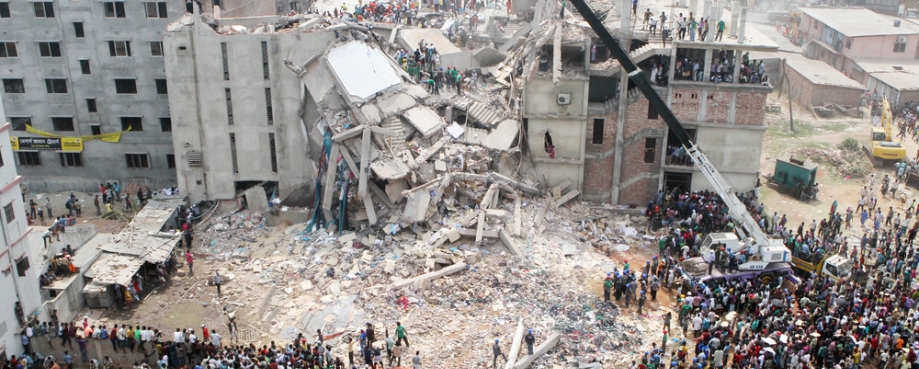
Every year on 24 April we remember the tragedy of the Rana Plaza collapse, which claimed the lives of over 1,100 people and injured many more. Most of the casualties were women garment workers. Families lost, daughters, sisters, and mothers. Others lost colleagues and friends.
Women in global supply chains face heightened occupational health and safety risks due to systemic inequalities, gender-specific vulnerabilities, and workplace structures. Women’s occupational risks stem from both the nature of their work in supply chains and structural inequities in labour systems. Addressing these requires gender-responsive safety policies, stronger worker protections, and accountability.
In the wake of this year’s anniversary, ETI will publish new guidance on ‘Gender-responsive occupational safety and health in supply chains’. This guidance is aimed at supporting companies to apply a gender lens to occupational health and safety (OSH) within human rights due diligence (HRDD) frameworks and better protect women workers.
Why gender matters in OSH
A safe and healthy work environment is a fundamental right. However, OSH practices often neglect gender-specific risks, leaving women workers disproportionately exposed to harm in supply chains. In particular:
- Women and men face different risks due to biological, social, and occupational factors.
- Ill-fitting PPE, non-inclusive tools, exposure to harmful chemicals, job segregation, and gender-based violence and harassment (GBVH) all contribute to unsafe conditions for women workers.
- Climate change further exacerbates risks, especially for vulnerable groups such as pregnant workers.
Bridging the gap: A gender-responsive OSH approach
The tragedy of Rana Plaza highlighted the disastrous consequences of neglecting worker safety, especially for women. To prevent such catastrophes from happening again, businesses must adopt a gender-responsive OSH approach that:
- Embeds gender considerations into OSH policies and supplier codes of conduct.
- Conducts gender-specific risk assessments using disaggregated data and confidential worker feedback.
- Adapts PPE, work tasks, and workplace facilities to meet the needs of all workers, including women.
- Implements gender-sensitive monitoring and communication strategies.
- Provides survivor-centred remedies and strengthens worker representation through functional OSH and gender-based violence and harassment (GBVH) committees.
Moving forward: A call to action
Twelve years on, Rana Plaza has highlighted important challenges in global supply chains, from occupation health and safety to worker protections. Collaborative multistakeholder efforts like the Bangladesh Accord and the RMG Sustainability Council have demonstrated that when brands, worker representatives, civil society and local industry come together, progress is possible.
As we remember the Rana Plaza disaster and observe the World Day for Safety and Health at Work next week, it is crucial for businesses and other stakeholders to commit to building safer and more inclusive workplaces. This means recognising and addressing the unique OSH needs of women and all workers through proactive HRDD, gender-responsive policies and practices.
Key to this approach is meaningful stakeholder engagement. That means not only listening to workers and their representatives but involving them in shaping the decisions that affect their working conditions. Businesses, governments, civil society and trade unions must collaborate to ensure that occupational health and safety measures are truly inclusive, effective, and respectful of human rights.
To support these efforts, ETI continues to convene businesses, NGOs and trade unions to develop practical solutions to advance human rights in global supply chains. Together we work to promote gender equality, support gender-responsive human rights due diligence and address gender-based violence and harassment in global supply chains, we also mainstream gender throughout our programmes and operations to ensure gender is part and parcel of our work.
Gender-responsive occupational safety and health in supply chains

